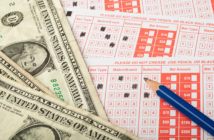Legally or illegally, sports betting is big money. In 2016 in Australia, $921 million was wagered on sports, but that’s just the tip of the iceberg when comes to global expenditures on sports betting. American College Football alone has an estimated $60-70 billion illegally placed on its games every year, for example.
Betting on sports is a trap for many, but it doesn’t have to be. Betting on games can be profitable if done correctly. If you know what to look out for and stay disciplined, you’ll come out on top most of the time.
But win or lose, it’s mostly about the fun. Sports betting aims to give you a rooting stake in a game where there previously may not have been one, making your viewing experience more tense and exciting.
If sports betting sounds like a venture you’d like to enter, this comprehensive guide will show how to bet on sports and avoid making crucial mistakes.
Your Invitation to the Best Online Pokies in Australia
Like a punt on the slot machines?
Our top rated slots for October 2019 are the smash-hit online pokie sites: Ruby Fortune and Jackpot City Casino.
These sites include some impressive matched bonuses – up to $750 and $1600 respectively! With the potential for some seriously big wins, here’s your chance to get a piece of the action:
The Importance of the Value Bet
If you’re a poker player, you’ve probably heard a little about “value betting.” A value bet is a bet where the odds of you winning are better than the odds you were given (by a bookie in this case).
Let’s say, for example, that you were betting on a coin toss. We all know that because a coin has two sides, either side has a 50% chance of landing face-up. In other words, either outcome has 1:1 odds. Each outcome is equally weighted.
In this scenario, if you bet $1 on heads, you’d get $1 if you won and lose $1 if you lost. If you did this hundred times you’d probably come out even, so betting on a coin toss with 1:1 odds isn’t exactly a value bet.
But imagine some dumb bookie gave you 1:2 odds for betting on heads. This means that for ever time the coin lands on heads, the bookie thinks it’ll land on tails twice. The money you’d win for betting on heads would reflect this odds differential. So if you bet $1 on heads in this scenario, you’d get $2 every time the coin landed on heads, and lose $1 for every time it landed on tails.
Because we know the true odds of a coin toss to be 1:1, you’d come out on profitable in this scenario. If you did this coin toss 100 times, you’d likely have $100 in profit (from 50 successful coin flips landing on heads) and $50 in lost wagers (for every time it landed on tails), giving you a net profit of $50.
In this scenario, you win out and the bookie loses because he placed bad odds on a coin toss.
Applying Value Betting to Sports
When comes to sports, the odds of a particular outcome are never mathematical truths like the outcomes of a coin toss. Though some teams or athletes come close, there is no such thing as a guaranteed outcome in sports.
This is the magic, and the fun, of sports betting. Using your knowledge of sports and a little intuition, it’s up to you to find your own value bets.
Here’s a recent real-world example: In the previous round of the NBA playoffs, the Cleveland Cavaliers faced off against the Toronto Raptors in a best-of-7 series. The Toronto Raptors were the #1 seed, coming off the best regular season in franchise history. The Cavaliers, meanwhile, were sitting at the #4 seed, having had an extremely tumultuous and mediocre regular season.
Because of this, oddsmakers made the Raptors the favorites to win the series. On paper, they were just too good for this Cavaliers team. Many bookies gave them 3:1 or even 4:1 odds of winning the series.
But any avid basketball watcher knows that the Raptors find a way to fall apart in the playoffs every single year. And the Cavaliers have the Lebron James, the best basketball player of his generation, who always finds a way to win in the postseason.
Ultimately, the Cavalier won the series handily, and the oddsmakers lost out. This means that anyone who put money on the Cavaliers in that series made a value bet. As a sports bettor, it is your job to capitalize on the mistakes of the oddsmakers and bookies.
How to Read the Lines
Now that you understand what value bets are and why they’re important, it’s time to actually start making bets. To do that, you first have to understand how to read the “betting lines.” These lines will list the odds the bookie thinks each team has of winning (among other things), but they’re almost never expressed in traditional a mathematical x:y format.
The Money Line
Betting on the money line for a given game, means you betting money on either team winning outright, with no stipulations. The odds each team has of winning is usually expressed in + or – numerical values.
For example, let’s say the Houston Rockets are facing off against the Golden State Warriors. For this hypothetical game, the money line for the Warriors is -450 and the line for the Rockets is +350.
For the Warriors, -450 means that their odds of winning are 4.5:1. This means that to win just $1 by betting on the Warriors, you’d need to wager $4.50. The oddsmakers, in this case, think that the Warriors are the heavy favorites win this game.
For the Rockets, the +350 means that they’re the underdogs. Their odds of winning are 1:3.5, meaning that for every dollar placed on a Rockets win, you’d receive $3.50 in winnings.
In this situation, if you think it’s stupid that the Warriors are so heavily favored, you’d make a value bet and place money on the Rockets.
The Point Spread
In addition to the money line, you can also bet on the point spread, which is a tad more complicated. With the point spread, you’ll be betting not just on which team will win, but by how much they’ll win.
On this same previously mentioned betting line for the Warriors and Rockets, let’s say the point spread -9 for the Warriors and +9 for the Rockets. These are numbers are essentially two ways of saying the same thing: the Warriors are favored to win by 9 points.
So if you bet that the Warriors will “cover” the spread, you’re betting that they’ll win by at least 9 points. If you bet on the Rockets to cover the spread, you’re betting that they’ll either win outright or lose by less than 9 points.
The odds of each outcome on a point spread are usually listed in parentheses under each + or – number. Typically, the odds of for a point spread are are much more even. In this real-world example we’ve been using, the odds of either the Warriors winning by at least 9 or the Rockets winning or losing by less than 9 are the same: -110.
To win $1 on by betting on either outcome, you’d have to wager $1.10.
The Over/Under
Lastly, you can bet on the teams’ total points, also referred to as the over/under. Here, the oddsmaker picks a guess on the total points scored in a game, and you have to bet that the point total will be over or under that amount.
For this Warrior-Rockets over/under, the point total was 224, as both teams have high-powered offenses. Like the point spread, the over/under also has other near-even odds. In this case, the odds were also at -110 for either outcome.
Betting the Middle
A bookie determines the odds for a given game based on their preliminary judgment as well as where the “action” goes, or where the bettors are placing their money. So in the lead-up to a given sporting event, the line can frequently change. You can take advantage of this by monitoring these changes and betting on the same game but with different lines.
For example, let’s say that a rugby game is scheduled on a Sunday night, and the bookie opens the betting line with Team A as a 7-point favorite. Let’s then say you take team A to cover the spread with this line as it currently stands.
During the week leading up to the game, bettors are jumping on Team A’s line, indicating to the bookies that the opening line was too favorable for the bettors. In an attempt to even the odds, the bookie changes to the line to make Team A a 10-point favorite, reducing their odds covering the spread.
Now, with this new betting line, you can bet on Team B, who are now +10 underdogs. This way, it is possible to win on both of the bets you’ve made if Team B loses by 8 or 9 points.
“Middling” like this is a great strategy for betting in a low-risk, high-reward fashion. You should always be on the lookout for chances to bet the middle, though they don’t frequently present themselves.
Now That You Know How to Bet on Sports…
You’ll need to find an online bookie to place your bets with. To do this, you’ll want to check out the Sports Betting section of our website. We’ve got a comprehensive list of the best online gambling sites to place your money with.
And hopefully, this guide on how to bet on sports will prevent you from going broke betting on the Cricket games.







